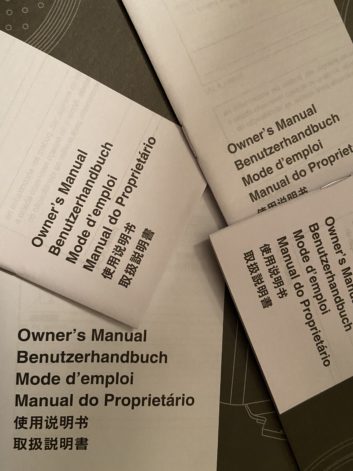A few days ago, I was in Studio A at Mercy College on a break between classes. Taking advantage of the room’s downtime, one of my students came in to work on a project that was assigned to the class. I call these types of assignments “Lab Assignments.” They’re task-specific projects that help students learn a particular recording technique. I’m meticulous about writing them in a detailed, step-by-step manner because the whole point of the exercise is for the student to succeed at the task.

This particular project was to reamp a guitar track. I supply them with a Pro Tools session that has a (previously unamplified) DI’d guitar track as the source, and their goal is to route the track from Pro Tools into a guitar amp using a reamp box, and re-record the result using the proper gear and technique. If a student follows the instructions, success is guaranteed.
When a student tells me that “it doesn’t work,” I always give them the benefit of the doubt.
It’s possible that I could have omitted a step. Or maybe they’re doing it in Studio B or C where the process is slightly different from that required in Studio A, and I failed to provide specific instructions for that room. Such was not the case this time.
Student: I did what you said Professor, but it doesn’t work.
Me: Did you check the steps? (while I look over his shoulder at the PT session and observe that the routing is incorrect).
Student: Yes.
Me: You’re missing a part of the process. Recheck your steps.
Student: I did.
Me: Then it should be working. I promise that if you follow the instructions carefully it will work. Take another look at them.
The student re-checked the instructions, realized his mistake and a few minutes later, I heard the guitar amp blaring in the live room—exactly as planned.
Me: Ahhhhh. I see it’s working…
Student: Yes I got it now. (he smiles, and so do I).
We have a euphemism in the department for such situations: “RTFM.” I will not explicitly decode that abbreviation here, but it has something to do with Reading The Manual. Students don’t like to read the manual. Neither do I.
All of which made me laugh at myself today as I started unpacking a new Yamaha electronic drum kit. Opening it was an exercise in self-control, partly because I’m excited to play it, and partly because it’s a loaner kit. Eventually I’ll have to return it, and all of the components will need to be repacked in the exact same manner as when they were sent to me. Yikes. I took lots of photos and resigned myself to the fact that the first “session” would be nothing more than unboxing everything.
Read More Mix Blog Live: Virtually NAMM.
The second “session” was figuring out how to flip the components of the rack to accommodate my left-handed-ness, because the rack ships in a configuration that would be used by a right-handed player. A trip to the manual enabled me to: (a) see where the components are supposed to be mounted for a right-handed drummer. and (b) mirror those arrangements for my lefty setup.
It’s probably not an exaggeration to say that I’ve set up drums a thousand times, and yet—taking the same advice I doled out to my student the other day—I thought it would be a smart idea to consult the manual. Indeed, it was.
The last time I assembled an electronic drum kit probably dates back to when I had long hair (!), and to say that the gear has changed would be an understatement. Lo and behold, that trip to the manual proved extremely helpful in getting the rack set, the components mounted and the wiring harness properly connected.
Whaddya know? RTFM works! I can’t wait to play these things.







